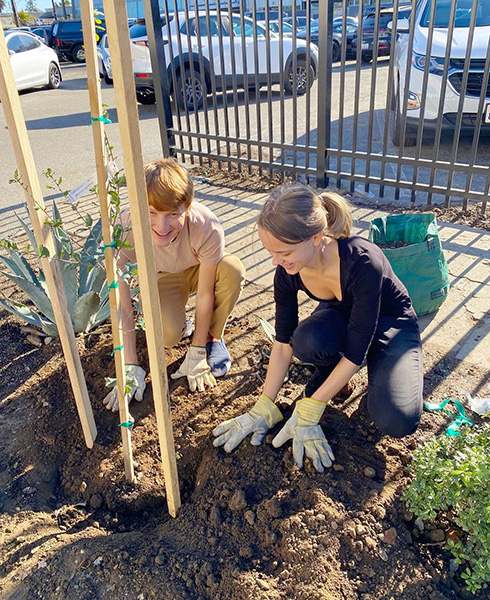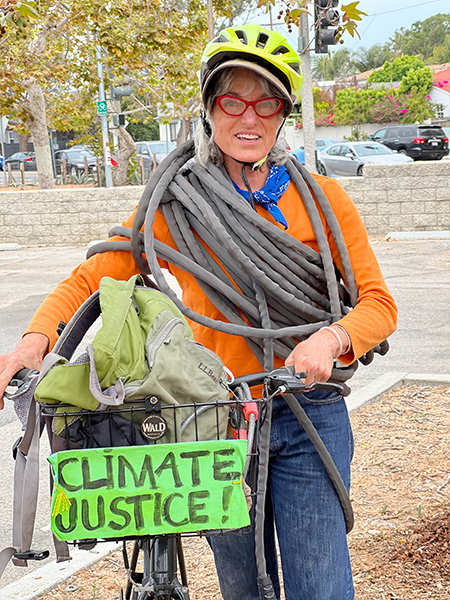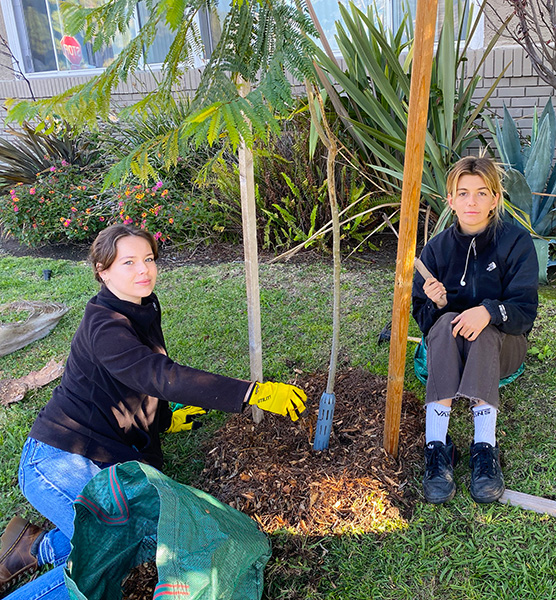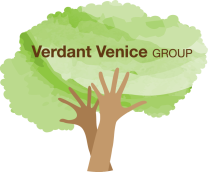


Verdant Venice Group: Greening the Future, One Tree at a Time
Shade, beauty, biodiversity—trees offer it all.
The Verdant Venice Group (VVG), believes that everyone deserves the life-changing benefits of tree canopy. Since 2018, this grassroots volunteer has been planting native trees and restoring green spaces in Venice, California—especially in and around the parkways adjacent to low income housing. Why are they so committed to tree planting and the benefits of an urban tree canopy? We hope you’ll read on…
Why Trees Matter More Than Ever
The climate crisis is no longer a distant threat. It’s here. While our 2025 spring has so far been a cool one, it is predicted that, by 2050, extreme heat days in Los Angeles County will quadruple (Sun et al., 2015). The LA Times recently warned that heatwaves could cause 2–3 times more heat-related deaths by mid-century (Pineda, 2023). A number of studies also show (NOAA, Climate at a Glance) that our County is receiving less rain than in past decades and that soils are becoming drier earlier in the season. Amid such dire projections, it’s easy to feel powerless.
But here’s the good news: you can help fight back—by planting trees.
In Los Angeles, shade is not a luxury—it has become a necessity. Many neighborhoods, especially underserved ones, suffer from heat islands: blocks of treeless concrete that trap heat and overheat homes and sidewalks.
Tree Equity Is Environmental Justice
A 2016 study revealed only 25% of Los Angeles is covered by tree canopy—and 18% of that exists in just a handful of affluent neighborhoods (Seidman, 2024). To help level the playing field, the Metropolitan Water District now offers rebates of $100 per approved tree—up to $500 per household—to encourage greening in communities that need it most.
What Trees Do for Cities and the Planet
The benefits of trees go far beyond shade:
- Reduce surface temperatures by up to 45°F (Dudek Report, 2018)
- Filter out air pollutants and sequester CO₂ (One Tree Planted, Aug 2024)
- One hundred mature trees can prevent over 139,000 gallons of stormwater runoff per year and remove 53 tons of carbon dioxide (USDA, fs.usda.gov)
- Support wildlife, native plants, and crucial pollinators (including USDA and California Department of Fish and Wildlife) and prevent species extinction (Scientific American , 2023)
- Lower rates of respiratory illness and improve public health (McPherson et al., 2011)
Climate change doesn’t just heat up our cities—it threatens the very biodiversity that sustains us. Planting native trees and restoring understory plants helps protect habitats from extinction and invasive species.
Local Action with a Lasting Impact
Verdant Venice Group is on the frontlines of this movement. To date, VVG has planted over 500 trees and 300+ native shrubs and flowering plants across Venice—focusing on low-income housing, schools, and public corridors that are too often overlooked.
Venice may be one of Southern California’s top tourist destinations, but city funding for tree maintenance is scarce. In fact, street trees are only pruned once every 17 years, according to Urban Forestry Supervisor Stephen DuPrey. VVG is working to fill that gap—by planting, maintaining, and educating.
Neighbors Taking Action—From Ages 8 to 83
VVG is powered by passionate volunteers of all ages. Working closely with city departments, they have secured permits, hauled mulch, dug trenches, and watered young saplings week after week. These community heroes aren’t just planting trees—they’re planting hope.
Through school partnerships, VVG also introduces local youth to gardening and environmental stewardship, inspiring the next generation of climate leaders.
As one new volunteer, Lizzie, shared:
“Getting a live oak in the ground, staking, mulching, and watering it made me feel closer to the earth. Can’t wait to bike by over the years and watch my little oak grow tall!”
You Can Help Restore Our Planet—Starting in Your Neighborhood
Planting trees is by no means the sole solution to climate change. Scientists across the globe agree that reducing carbon emissions from fossil fuels is crucial. The battle against climate disaster must be fought on this front as well. But while we remain dependent on corporations and legislation to fully accomplish fossil fuel reduction, planting native trees is something individuals have the power to do in their own neighborhoods.
References
The Dudek Report https://www.cityplants.org/wp-content/uploads/2018/12/10939_LA-City-Plants_FirstStep_Report_FINAL_rev12-7-18.pdf
Using trees and vegetation to reduce heat islands. U.S. EPA
Loïc Gillerot, Dries Landuyt, Pieter De Frenne, Bart Muys, Kris Verheyen, Urban tree canopies drive human heat stress mitigation, Urban Forestry & Urban Greening, Volume 92, 2024, 128192, ISSN 1618-8667, https://doi.org/10.1016/j.ufug.2023.128192.
Magruder, K. (2023, Sept. 18) Keeping your cool in a warming world: 8 steps to help manage eco-anxiety. The Conversation.
MaryCarol, R. H., Brenda, W. G., & Sophie, Y.-P. C. (2019). Urban nature experiences reduce stress in the context of daily life based on salivary biomarkers. Frontiers in Psychology, 10. https://doi.org/10.3389/fpsyg.2019.00722
McNamara, K. A., Kostelny, M., Kim, G., Keating, D. M., Estiandan, J., & Armbruster, J. (2022). A novel resident outreach program improves street tree planting outcomes in los angeles. Environmental Challenges, 9. https://doi.org/10.1016/j.envc.2022.100596
McPherson, E. G., Simpson, J. R., Xiao, Q., & Wu, C. (2011). Million trees Los Angeles canopy cover and benefit assessment. Landscape and Urban Planning, 99(1), 40–50. https://doi.org/10.1016/j.landurbplan.2010.08.011
Pineda, D. (2023, August 24). California is working on solutions to worsening climate change: Will they be enough? The Los Angeles Times.
Seidman, L. (2024, March 6). Plant a tree, get $100 under new MWD program aimed at expanding SoCal’s tree canopy. The Los Angeles Times. Plant a tree, get $100 under new MWD program – Los Angeles Times
Sun, F., Walton, D. B., & Hall, A. (2015). A hybrid dynamical-statistical downscaling technique. part ii: end-of-century warming projections predict a new climate state in the los angeles region. Journal of Climate, 28(12), 4618–4636.
Uppalapati, S., Ballew, M., Campbell, E.’ Kotcher, J., Rosenthal, S., Leiserowitz, A., & Maibach, E. (2023). The prevalence of climate change psychological distress among American adults. Yale University and George Mason University. New Haven, CT: Yale Program on Climate Change Communication. https://climatecommunication.yale.edu/publications/climate-change-psychological-distress-prevalence/
